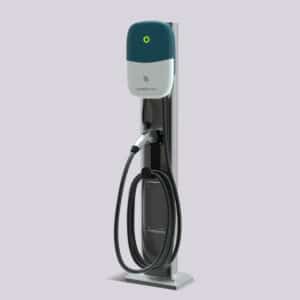- Challenges Facing EV Integration and Grid Capacity
- Opportunities for Collaboration
- Strategies for Developing a Unified System
- Regulatory and Policy Framework
- Case Studies
- Future Outlook
- Conclusion
As the adoption of electric vehicles (EVs) accelerates globally, the need for a robust and efficient energy grid becomes paramount. Both utilities and automotive companies stand at a crossroads where collaboration could significantly enhance the capabilities of the grid while promoting sustainable transportation. This article explores how these industries can work together to develop a unified EV and grid support system, offering benefits that extend beyond their immediate business interests to the broader society and environment.
Challenges Facing EV Integration and Grid Capacity
The surge in EV popularity brings with it a unique set of challenges for energy grids, primarily related to the increased demand for electricity and the need for new infrastructure. Utilities face the task of managing peak load times without compromising grid stability. For automotive companies, the challenge lies in ensuring that their vehicles are compatible with existing grid capabilities and that charging infrastructure can meet customer needs without strain.
Opportunities for Collaboration
Collaboration between utilities and automotive sectors opens up numerous opportunities. Mutual benefits include leveraging automotive battery storage to balance grid demands, reducing infrastructure costs through shared investments, and utilizing data from vehicles and chargers to optimize energy consumption and distribution. Technologies like smart charging and vehicle-to-grid (V2G) systems can play pivotal roles here, potentially turning EVs into mobile energy solutions that support grid stability during peak times.
Strategies for Developing a Unified System
- Infrastructure Development: A strategic approach to infrastructure is crucial for the integration of EVs into the grid. Utilities can spearhead the development of advanced charging stations equipped with smart technology that dynamically adjusts the charging rate based on grid capacity and demand. Renewable energy sources, such as solar and wind, should be integrated to ensure that the increased energy demand is met sustainably.
- Technology Integration: The key to a successful unified system lies in technology integration. Implementing smart grid technologies can facilitate real-time communication between EVs, charging stations, and the grid, enabling more efficient energy management. Advances in battery technology could also provide dual benefits of longer-range EVs and potential energy storage solutions for the grid.
Regulatory and Policy Framework
Navigating the regulatory landscape is essential for fostering an environment conducive to integration. Current policies may need reevaluation to support innovations in EV and grid technologies. Incentives for companies that invest in sustainable practices and technologies could accelerate the adoption of unified systems. Additionally, policies encouraging the installation of renewable energy sources for EV charging infrastructure could ensure long-term sustainability.
Case Studies
Several successful collaborations can serve as models. For instance, a pilot program in California saw a major utility and an automotive giant partner to utilize V2G technology, allowing cars to feed energy back to the grid during peak hours. This not only helped stabilize the grid but also generated extra income for EV owners.
Future Outlook
The future of EVs and the energy grid looks promising with continued technological advancement and increased emphasis on sustainability. Innovations in AI and machine learning could further enhance the efficiency of smart grids, making them more responsive to changes in demand and supply. The role of utilities and automotive companies will evolve as they adapt to these changes, potentially leading to new business models centered around energy services.
Conclusion
The collaboration between utilities and automotive companies in creating a unified EV and grid support system is not just feasible but necessary for the sustainable growth of both sectors. By addressing the challenges and leveraging the opportunities for integration, these industries can help pave the way for a more sustainable and efficient future.
Featured Products
-
 Add To Cart Select options
Add To Cart Select options
Nick Zamanov is a head of sales and business development at Cyber Switching. He is an expert in EV infrastructure space and he is an EV enthusiast since 2012, Since then Nick strongly believed that electric vehicles would eventually replace Internal Combustion Engine (ICE) cars.



